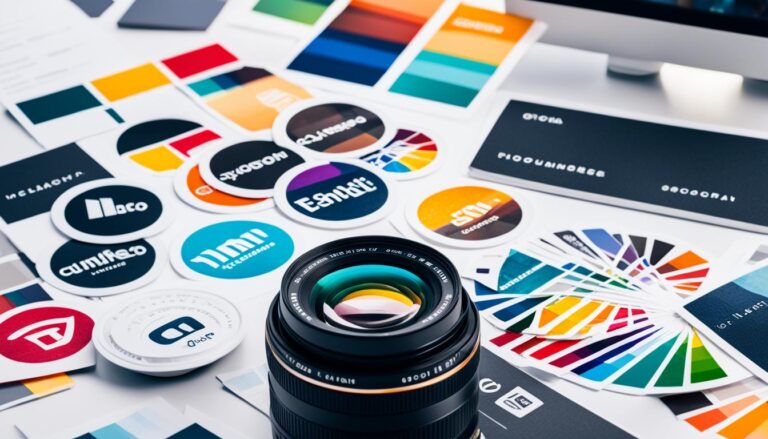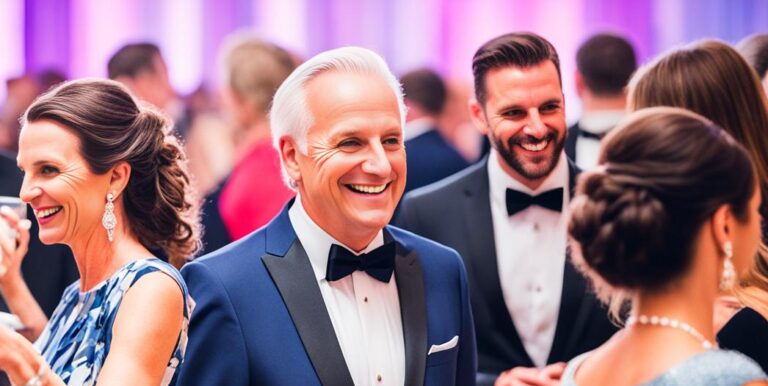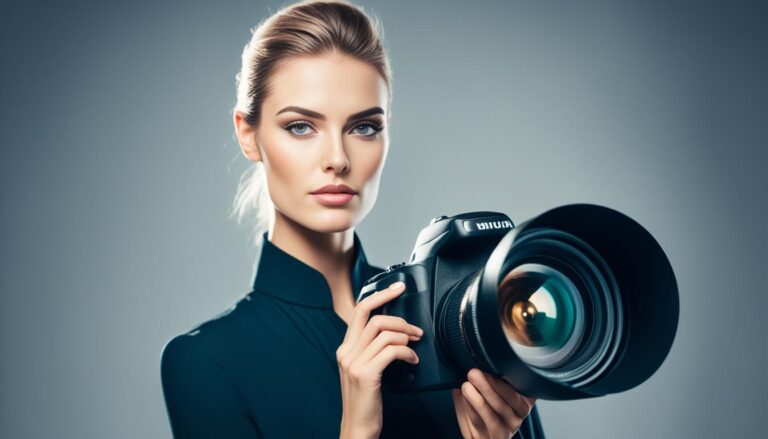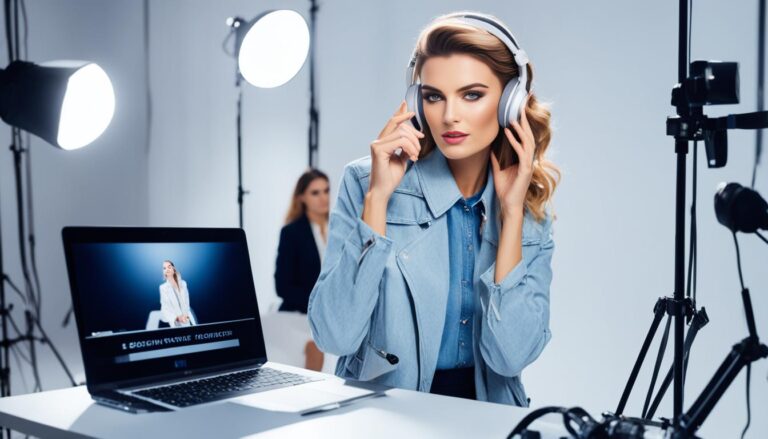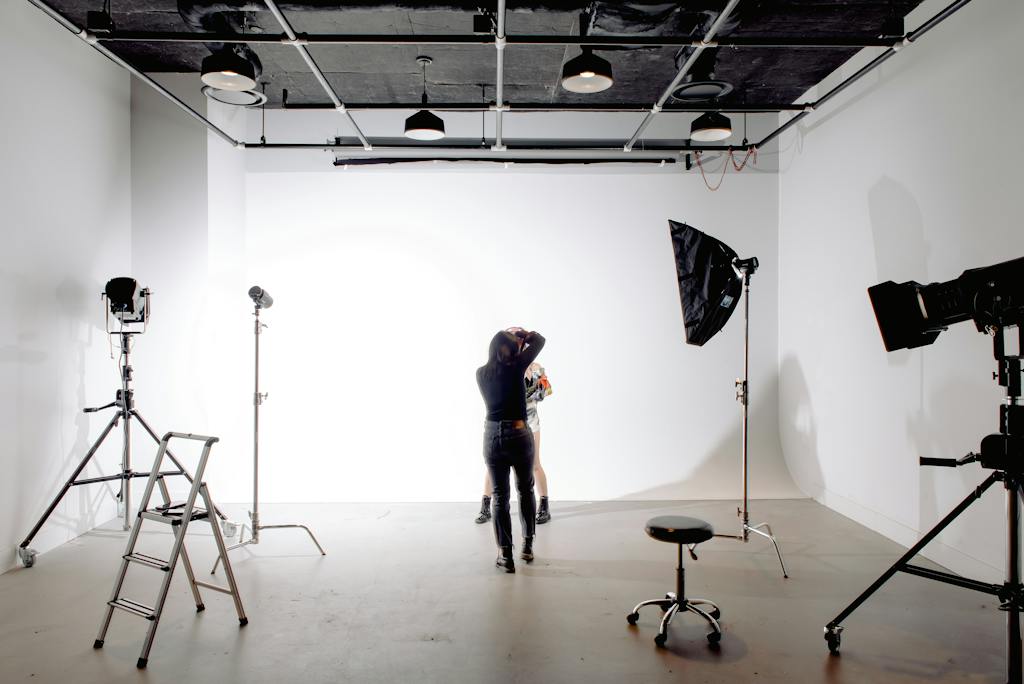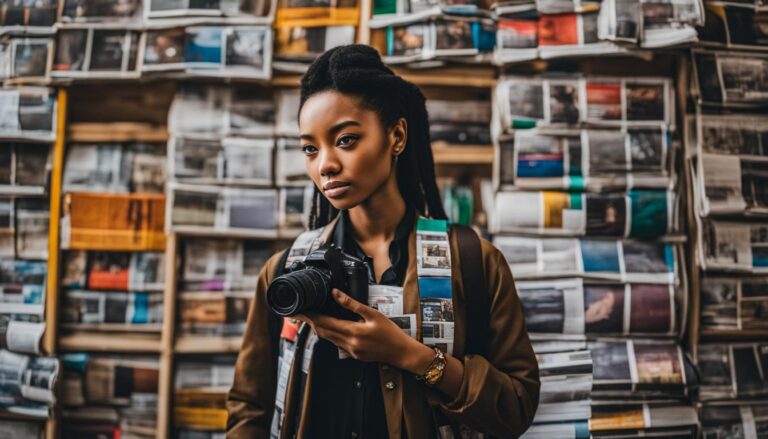How to Become an Interior Photographer
Have you ever walked into a beautifully designed space and felt a sense of awe and inspiration? I know I have. There’s something magical about how interior designs captivate our senses and evoke a range of emotions. As a photography enthusiast, I found myself constantly drawn to capturing the beauty of these spaces through my lens. That’s when I realized that becoming an interior photographer was my calling.
In this article, I want to share with you my journey of turning my love for interior photography into a rewarding career. Whether you’re a hobbyist photographer looking to take your skills to the next level or someone who’s always been fascinated by interior photography, this guide will equip you with the knowledge and tools you need to succeed as a professional interior photographer.
- Becoming an interior photographer is a journey that requires passion and dedication.
- Developing a unique photography style can help you stand out in a competitive industry.
- Mastering the technical aspects of interior photography, such as composition and lighting, is essential.
- Building a strong portfolio and implementing effective marketing strategies are key to attracting clients.
- Maintaining a work-life balance is crucial as a freelance interior photographer.
Embarking on the Journey to Interior Photography
To begin your journey into interior photography, it’s important to discover your passion for interiors. This involves exploring various interior design styles and developing an appreciation for the beauty of well-designed spaces.
Discovering Your Passion for Interiors
Before diving into interior photography, take the time to immerse yourself in the world of interior design. Explore different styles, from minimalist to eclectic, and study how each creates a unique atmosphere. Pay attention to details like colour schemes, furniture arrangement, and decorative elements. Developing an eye for what makes a space visually appealing and comfortable is essential in capturing it through photography.
Transitioning from Hobbyist to Professional Photographer
If you’re a hobbyist photographer looking to turn your passion into a profession, interior photography can be a rewarding choice. As you transition into the professional realm, ensure you have a solid foundation in photography techniques, such as composition, lighting, and post-processing. Take the time to hone your skills and experiment with different camera settings to achieve the desired results. Additionally, consider investing in quality equipment that can help you capture the full beauty of interior spaces.
Understanding the Market and Setting Your Goals
Before establishing yourself as an interior photographer, it’s crucial to understand the market and set clear goals for your career. Research and study the work of established professionals in the field to gain insights into their approach and style. Identify potential niches or specializations within interior photography that align with your interests and skills. You can focus your efforts and develop a targeted marketing strategy by setting specific goals, such as the type of clients you want to work with or the publications in which you aim to be featured.

Finding Your Unique Photography Style
Developing a unique style is essential in the competitive field of interior photography. As an interior photographer, standing out and differentiating yourself from others is important. One way to do this is by experimenting with different techniques, compositions, and editing styles to find a style that aligns with your creative vision and resonates with your target audience.
Try different shooting techniques such as long exposures, creative angles, or unique perspectives to capture the essence of each interior space. Explore various compositions to create visually interesting and engaging images. Experiment with different editing styles, whether enhancing the colours to create a vibrant look or embracing a more muted and minimalist aesthetic.
Consistency is key to developing your unique style. Maintaining a consistent approach in your photography can build a recognizable brand and attract clients who appreciate your distinctive aesthetic. Whether it’s a preference for bold, dramatic images or a focus on capturing the subtle details of a room, having a consistent style will help you establish your name in the industry.
Remember, finding your unique photography style is a continuous process. As you evolve as a photographer, your style may evolve as well. Embrace the journey of self-discovery and allow yourself to adapt and grow creatively.
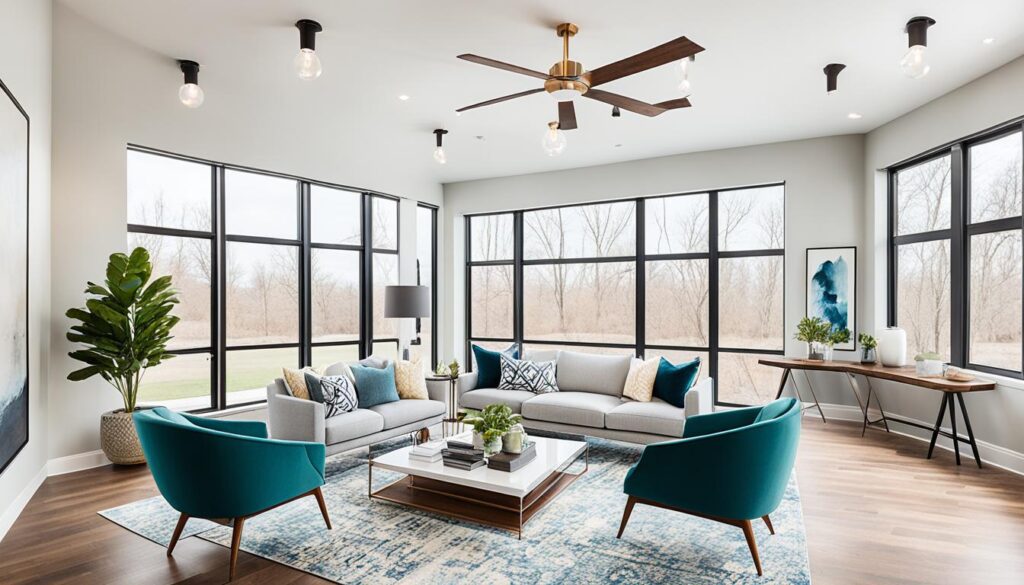
Experimentation and exploration are crucial in interior photography. Allow your creativity to soar, and don’t be afraid to push boundaries. Developing a unique photography style will set you apart and ensure you leave a lasting impression on your viewers.
Mastering the Techniques of Interior Photography
Mastering the techniques of interior photography is essential for capturing stunning images that showcase the beauty of interior spaces. To achieve this, it is crucial to have a good understanding of composition, lighting, and post-processing. Applying these key techniques can elevate your interior photography skills and create captivating visuals.
In terms of composition, thoughtful framing is crucial to highlight the unique design elements of each interior. Pay attention to the lines and symmetry within the space to create visually pleasing images that draw the viewer’s eye. By strategically positioning yourself and the camera, you can capture the essence of the space and emphasize its most appealing features.
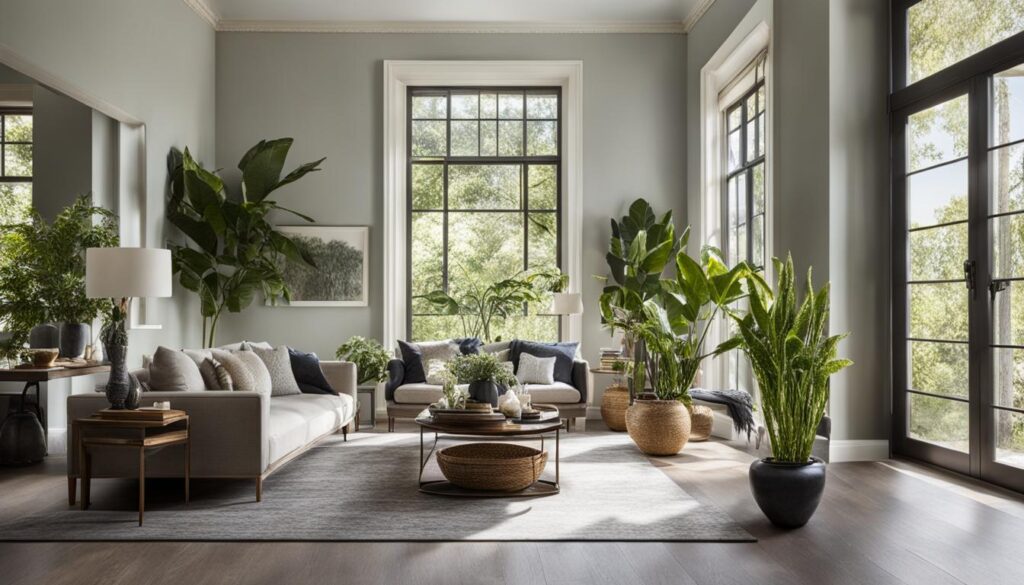
When it comes to lighting, understanding how to work with natural and artificial light is essential. Natural light can create a soft and warm atmosphere, while artificial light allows you to add a specific mood or highlight certain areas. Experimenting with different lighting setups and techniques, such as using reflectors and adjusting exposure settings, will help you achieve balanced lighting and bring out the best in each interior.
“Understanding the interplay of light and shadow is key to crafting compelling interior photographs.” – John Smith, Professional Interior Photographer
Post-processing plays a crucial role in enhancing the final images. Use editing software to represent the space accurately by adjusting exposure, white balance, and color tones. It is important to balance enhancing the image and maintaining its natural look. By refining your post-processing skills, you can bring out the best in your interior photographs and create images that captivate viewers.
To summarize, mastering interior photography techniques requires combining technical skills, creative composition, and an understanding of lighting and post-processing. By honing these skills, you can capture the essence of each interior and create visually stunning images that leave a lasting impression.
Developing an Eye for Detail and Composition
Developing an eye for detail and composition is crucial for creating compelling interior photographs. It requires a keen observation of the elements that make a space visually appealing and the ability to arrange these elements harmoniously.
Importance of Lines and Symmetry in Interior Photography
Lines and symmetry play a vital role in interior photography, as they contribute to the composition’s overall balance and aesthetic appeal. Paying attention to the lines within a space and using them purposefully can create a sense of order and harmony in the photograph. Symmetrical compositions can also evoke a feeling of stability and balance.
Capturing the Essence of Interior Design
When photographing interiors, it’s important to capture the essence of the design. This involves focusing on the textures, materials, and unique features that define each space. By showcasing these elements, you can convey the atmosphere and mood of the interior, allowing viewers to get a sense of the overall design concept.
Utilizing Props to Enhance Photographic Stories
Props can be powerful tools in interior photography, allowing you to tell a story and add depth to your compositions. By strategically placing props that complement the design and theme of the space, you can create a narrative and evoke emotions in the viewer. Props such as plants, books, or decorative objects can add more interest and context to your photographs.

The Key Role of Lighting in Interior Photography
Lighting is a fundamental element in interior photography that can greatly impact the final result. Understanding the different types of lighting, how to achieve balanced lighting, and the effects of light direction are key to capturing stunning interior photographs.
Understanding Natural and Artificial Lighting
Natural lighting refers to the light from the sun and is widely considered the most desirable lighting option for interior photography. It provides a soft and even illumination that enhances the natural beauty of a space. To make the most of natural lighting, it’s important to shoot during the golden hours, either early in the morning or before sunset when the light is warm and diffused. Natural lighting can create a welcoming and inviting atmosphere in interior photographs.
Artificial lighting, however, involves using supplemental light sources such as lamps, spotlights, and strobe lights. This type of lighting gives photographers more control over the intensity and direction of light. It is often used to add depth and accentuate specific elements in an interior space. When using artificial lighting, it’s crucial to balance it with the natural light present to ensure a harmonious and natural-looking result.
Techniques for Achieving Balanced Lighting in Interior Spaces
Achieving balanced lighting is essential for producing well-lit interior photographs. Here are some techniques to consider:
- Utilize reflectors: Reflectors can help bounce light back into the scene and fill in shadows, creating a more balanced overall lighting. They can be positioned strategically to diffuse natural light or redirect artificial light.
- Adjust exposure settings: Experiment with different exposure settings to find the optimal balance between highlights and shadows. This can be done by adjusting the aperture, ISO, and shutter speed.
- Combine natural and artificial lighting: Combining natural and artificial lighting sources can create a dynamic and visually appealing result. By blending the two types of lighting, you can achieve a balanced and well-lit interior photograph.
How Light Direction Affects Mood and Texture
Light direction plays a crucial role in setting the mood and highlighting the texture of an interior space. The direction from which the light is coming can create different effects and evoke various emotions.
Front lighting, where the light source is in front of the subject, provides even illumination and is ideal for capturing a balanced and clear view of the space. It works well for showcasing detailed textures and emphasizing the overall design.
Side lighting creates dramatic shadows and adds depth to the photograph. It can help accentuate architectural elements, such as columns or textured walls, and evoke a sense of depth and dimension.
Backlighting, where the light source is behind the subject, can create a halo effect and add a sense of mystery to the image. It can be used to highlight specific features or create a silhouette effect.
By understanding and harnessing the power of light direction in interior photography, you can create photographs that evoke the desired mood and emphasize the texture of the space.
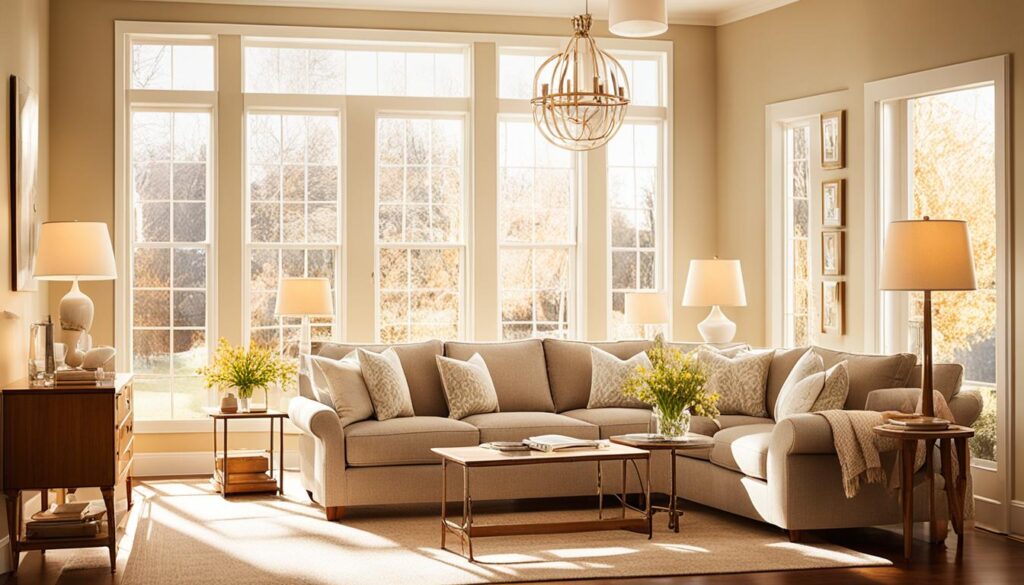
Investing in the Right Equipment for Shooting Interiors
Investing in the right equipment is crucial for achieving high-quality interior photographs. When it comes to shooting interiors, there are several key pieces of equipment that every photographer should consider:
Choosing Your Camera and Lenses Wisely
When selecting a camera for interior photography, opt for a model with excellent image quality, high resolution, and low-light performance. Look for full-frame or APS-C sensor cameras, which tend to capture more detail and perform better in low-light conditions. As for lenses, wide-angle lenses are the most commonly used for shooting interiors, as they allow you to capture more of the room in a single frame. Consider investing in a lens with a focal length between 14mm and 35mm for wide shots and a focal length between 50mm and 85mm for detail shots.
Why a Tripod Is Essential for Sharp Images
A tripod is an essential tool for interior photography, as it helps stabilize the camera and eliminates the risk of camera shake, resulting in sharper images. When shooting interiors, you often need to use longer exposure times to capture the available natural or ambient light, and having a tripod ensures that your camera remains steady throughout the exposure. Additionally, a tripod allows you to take multiple shots at different exposures and create a bracketed set for blending in post-processing, enabling you to capture a wider dynamic range.
Advancements in Photography Gear for Interiors
Photography gear for shooting interiors constantly evolves, and new advancements and innovations are regularly introduced. Stay updated with the latest gear releases to take advantage of technological advancements that can enhance your interior photography. From improved low-light capabilities to specialized lenses designed for architectural photography, staying informed about the latest gear can give you a competitive edge and push the boundaries of your creative vision.
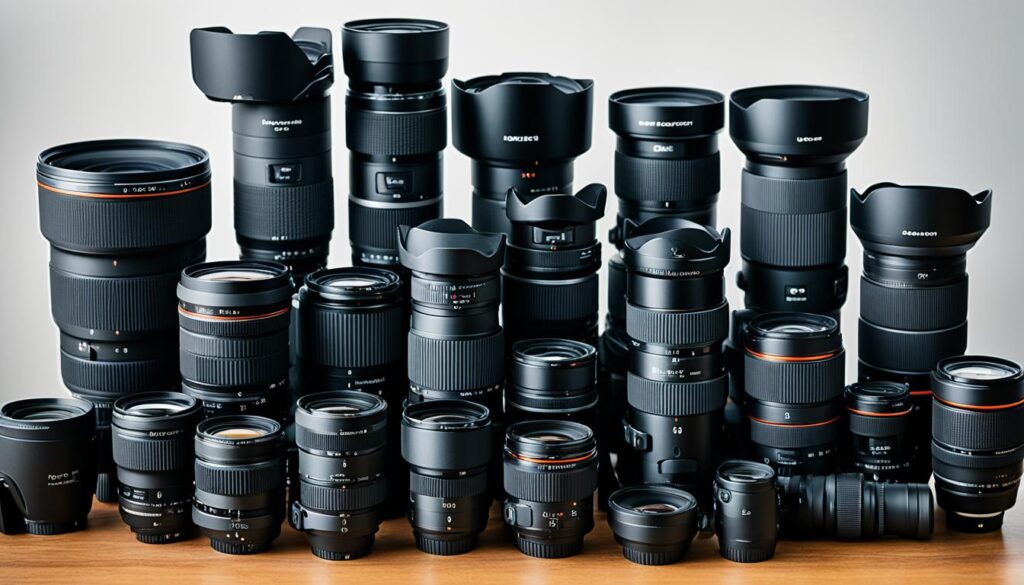
Post-Production: Editing Your Photos to Perfection
Post-production plays a vital role in the interior photography process. It allows you to enhance your images and ensure they are polished and visually appealing. You can take interior photographs to the next level by mastering various photo editing techniques.
One of the key aspects of photo editing in post-production is adjusting the exposure. This involves optimizing the brightness and contrast levels to reveal the details in your images. By carefully adjusting the exposure, you can ensure your interior photographs are well-balanced and properly illuminated.
Another important editing technique is adjusting the white balance. This allows you to correct any colour casts in your images and ensure that the colours are accurate and true to life. You can create a cohesive and visually pleasing look for your interior photographs by fine-tuning the white balance.
Colour tone adjustment is also crucial in post-production editing. This technique allows you to enhance the mood of your interior photographs by adjusting the overall colour palette. Whether you want a warm, inviting atmosphere or a cool, minimalist look, colour tone adjustment can help you achieve the desired effect.
It’s important to pay attention to small details during the editing process. Be mindful of any distractions or imperfections in your images and use tools such as spot healing or clone stamping to remove them. By editing your photos meticulously, you can ensure that your final images are visually stunning and ready to be displayed.
Take a look at the example below to see the transformation that can be achieved through post-production editing:

In this example, the image on the left represents the raw photograph straight from the camera, while the image on the right showcases the final edited version. Post-production techniques have enhanced the final image with improved exposure, white balance, and colour tones to create a visually appealing interior photograph.
By mastering the art of post-production editing and applying these techniques to your interior photographs, you can elevate the quality and impact of your work, ensuring that each image is a true representation of the beauty and design of the space.
Building a Professional Portfolio to Attract Clients
Building a professional portfolio is important in establishing yourself as an interior photographer. Your portfolio visually represents your skills, style, and expertise, showcasing your ability to capture the essence of different interior spaces.
When curating your portfolio, choose the best photographs that highlight your unique style and demonstrate your talent for capturing the beauty of interior designs. Showcasing diverse interiors, from residential homes to commercial spaces, will attract potential clients from various sectors.
Remember to organize your portfolio in a visually appealing and user-friendly manner. Consider creating different categories or sections to make it easier for potential clients to navigate and find the specific type of interior photography they want.
An impressive portfolio can help you secure photography assignments and attract clients who appreciate your artistic vision and attention to detail. When presenting your portfolio to potential clients, highlight the specific skills and techniques you used in each project, demonstrating your ability to turn their vision into stunning photographs.
Investing time and effort into building a professional portfolio will pay off in the long run. It will help you attract clients and establish your credibility as an interior photographer in the competitive industry.
| Advantages of a Professional Portfolio | Benefits for Attracting Clients |
|---|---|
| Displays your unique style and artistic vision | Attracts clients with similar tastes and preferences |
| Showcases your technical skills and expertise | Builds trust and confidence in your abilities |
| Demonstrates your ability to capture the essence of different interior spaces | Appeals to a wide range of clients from various sectors |
| Creates a professional impression and establishes your credibility | Increases the chances of securing photography assignments |
Remember to regularly update your portfolio with new and compelling work to keep it fresh and relevant. As you gain more experience and refine your skills, your portfolio will become an even more powerful tool for attracting clients and showcasing your growth as an interior photographer.
Marketing Strategies for the Aspiring Interior Photographer
Marketing yourself as an aspiring interior photographer is essential for attracting clients and growing your business. You can implement several strategies to increase your visibility and reach your target audience. This section will explore three effective marketing strategies for interior photographers: leveraging social media and digital presence, networking with interior designers and architects, and getting your work published in industry publications.
Leveraging Social Media and Digital Presence
Social media platforms offer a powerful tool for showcasing your work and connecting with potential clients. Create professional profiles on platforms like Instagram, Facebook, and Pinterest to share your portfolio, behind-the-scenes content, and tips on interior photography. Regularly post high-quality images highlighting your unique style and engage with your followers by responding to comments and inquiries. Utilize relevant hashtags to increase your reach, and consider collaborating with influencers or brands in the interior design industry to expand your network.
Networking with Interior Designers and Architects
Establishing connections with interior design and architecture professionals can lead to valuable collaborations and referrals. Attend industry events like design conferences or trade shows to meet interior designers, architects, and other industry professionals. Introduce yourself, exchange business cards, and express your interest in project collaboration. Building relationships with interior designers and architects can open doors to exciting opportunities and help you expand your client base.
Getting Your Work Published in Industry Publications
Including your interior photography in industry publications can significantly enhance your credibility and exposure. Research relevant magazines, online blogs, and interior design and architecture websites. Submit your best work for consideration, following their submission guidelines. Getting published showcases your talent and expertise and exposes your work to a wider audience, potentially attracting new clients and opportunities. Remember to maintain a consistent online presence and update your portfolio regularly to maximize the chances of getting your work published.
Navigating the Business Aspect of Interior Photography
As an interior photographer, understanding the business aspect of your profession is crucial. To ensure a successful career, it is essential to determine appropriate pricing for your services, create contracts to protect your work and understand licensing agreements to ensure fair compensation for your photographs.
When it comes to pricing, consider factors such as your experience, the scope of the project, and the market rates. Conduct thorough research to understand industry standards and adjust your pricing accordingly. Remember, valuing your work and not underselling your talent is important.
Creating contracts is vital to protect your work and establish clear client expectations. Contracts should outline the project’s scope, payment terms, usage rights, and other relevant details. Consult with a legal professional to create comprehensive and enforceable contracts that safeguard your rights and provide a solid foundation for your business.
Understanding licensing agreements is critical to receive fair compensation for your photographs. Licensing agreements determine how your images can be used by clients and for what purposes. Be clear about the licensing terms and negotiate accordingly to avoid misunderstandings or complications.
Staying organized and communicating clearly with clients is key to building a successful interior photography business. Keep track of your projects, invoices, and client interactions to ensure efficient workflow and seamless collaboration. Effective communication fosters positive relationships, which can lead to repeat business and referrals.
By navigating the business aspect of interior photography with professionalism and diligence, you can establish yourself as a reputable photographer and build a thriving career. Remember to continually educate yourself on industry trends and best practices to stay competitive.
Maintaining Work-Life Balance as a Freelance Photographer
Maintaining a healthy work-life balance is crucial for freelance interior photographers like myself. The nature of freelance work often blurs the line between personal and professional life, making establishing boundaries and prioritising self-care essential.
One of the key aspects of achieving work-life balance is efficient time management. As a freelancer, I manage photography assignments, personal life commitments, and professional development. To effectively balance these aspects, I have developed several strategies:
- Set Clear Priorities: I prioritize my assignments based on deadlines and importance. By creating a list of tasks and organizing them according to urgency, I ensure that I address crucial work without neglecting personal commitments.
- Create a Schedule: I maintain a structured daily schedule that allocates specific time slots for work, personal activities, and leisure. Having a routine helps me stay focused and avoid overworking.
- Take Breaks: Throughout the day, I allocate short breaks to rest, recharge, and engage in activities unrelated to work. These breaks contribute to my overall productivity and mental well-being.
- Practice Self-Care: I prioritize self-care activities such as exercise, hobbies, and spending quality time with loved ones. Taking care of my physical and mental well-being enables me to perform personally and professionally at my best.
- Learn to Say No: It is important to recognize my limitations and not take on more assignments than I can handle. Learning to say no to additional work commitments allows me to maintain a healthy work-life balance.
I can maintain a healthy work-life balance by implementing these strategies as a freelance interior photographer. It is essential to constantly evaluate and refine these techniques to adapt to changes in workload and personal circumstances.
“Maintaining work-life balance is not selfish; it is necessary for long-term success and well-being.”
– Unknown
In addition, it is crucial to remember that work-life balance is a journey, not an end goal. Finding the right equilibrium between work and personal life requires ongoing effort, self-reflection, and adjustment.
Conclusion
In conclusion, becoming an interior photographer requires a combination of passion, technical skills, and business acumen. By following the steps outlined in this article, you can embark on a successful career in capturing the beauty of interior spaces.
To start your journey, discover your passion for interiors by exploring different design styles and appreciating well-designed spaces. Transition from a hobbyist to a professional photographer by understanding the market and setting achievable goals.
Developing a unique photography style will help you stand out in the competitive field of interior photography. Mastering the techniques of composition, lighting, and post-processing is essential for capturing the essence of interior designs.
Building a professional portfolio showcasing your best work and implementing effective marketing strategies using social media, networking, and industry publications will attract clients and help grow your business. Understanding the business aspects such as pricing, contracts, and licensing is crucial for a successful career as an interior photographer.
Remember to continuously refine your skills, stay updated with industry trends, and consistently showcase your unique style to attract clients and build a thriving interior photography business.
FAQ’S
Q: How can I successfully become an interior photographer?
A: To become a successful interior photographer, it’s essential to start by learning the technical aspects of photography and familiarizing yourself with professional interior design principles. You can also consider assisting a professional interior photographer to gain practical experience.
Q: What are the top tips for a professional interior photographer?
A: Some top tips for a professional interior photographer include understanding the importance of lighting, choosing the right camera settings, using a wide-angle lens, and focusing on capturing the details of the space.
Q: What camera settings are recommended for interior photography?
A: For interior photography, it’s recommended to use a wide-angle lens, set a low ISO to reduce noise, choose an aperture that provides sufficient depth of field, and adjust the shutter speed according to the available light in the space.
Q: How can I prepare for a shoot day as an interior photographer?
A: To prepare for a shoot day as an interior photographer, scout the location beforehand, communicate with the client or design team to understand their expectations, pack all necessary equipment, and arrive early to set up and plan the shots.
Q: What essential skills are needed to become a professional interior photographer?
A: Some essential skills for a professional interior photographer include a good eye for composition, an understanding of lighting techniques, knowledge of interior design principles, the ability to work well with clients and design teams, and proficiency in post-processing software.
Q: How can social media channels help promote my interior photography business?
A: Social media channels can be valuable tools for showcasing your work, connecting with potential clients, and building a strong online presence for your interior photography business. Platforms like Instagram, Pinterest, and Houzz are popular choices for sharing interior photography projects.
Q: What is the significance of choosing the right equipment to get started in interior photography?
A: Choosing the right equipment is crucial for interior photography as it can significantly impact the quality of your images. Invest in a good camera body, wide-angle lens, sturdy tripod like Manfrotto, and possibly additional lighting equipment to ensure professional results.



